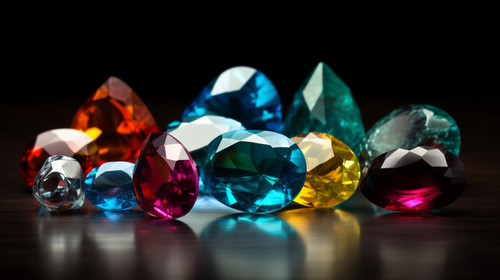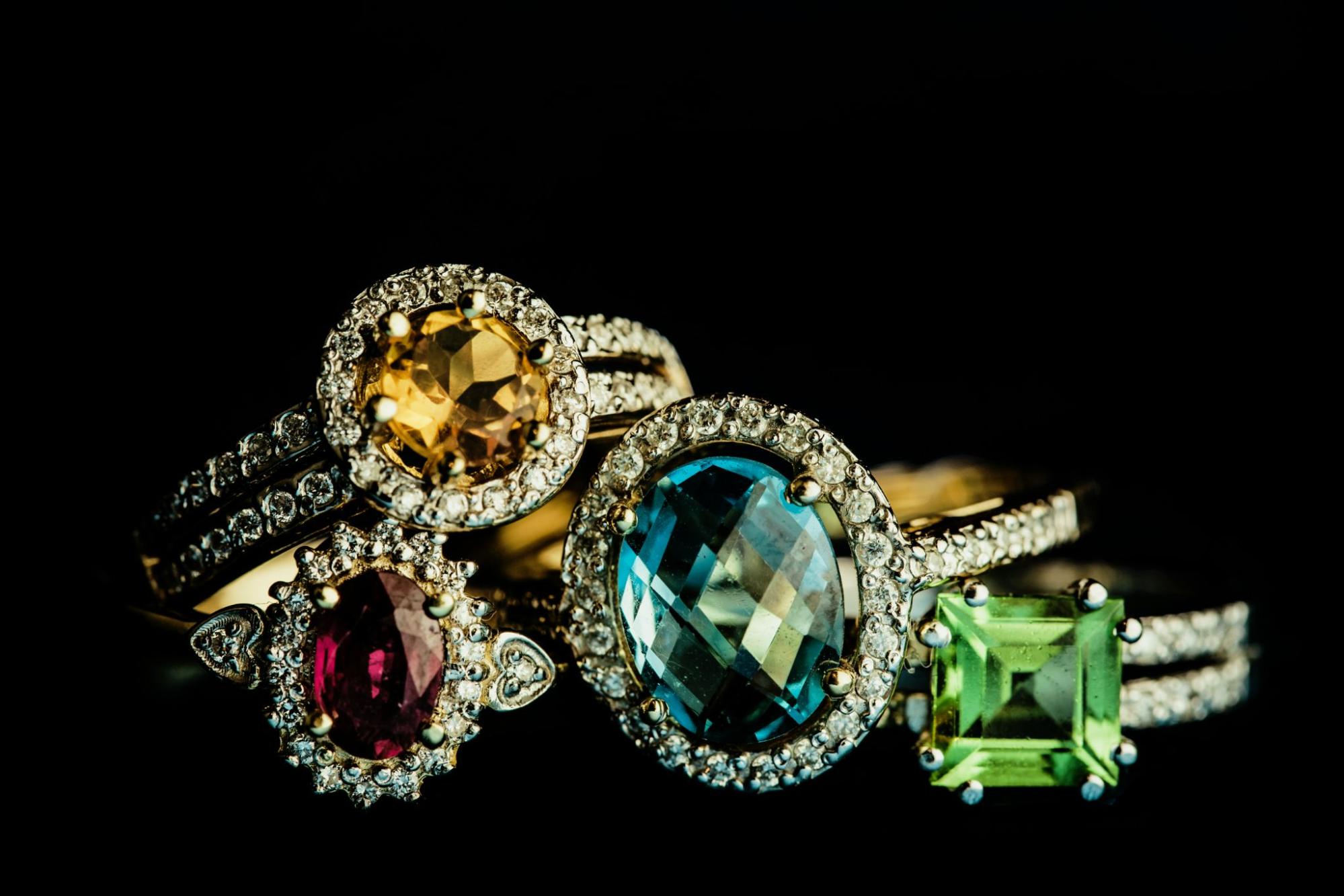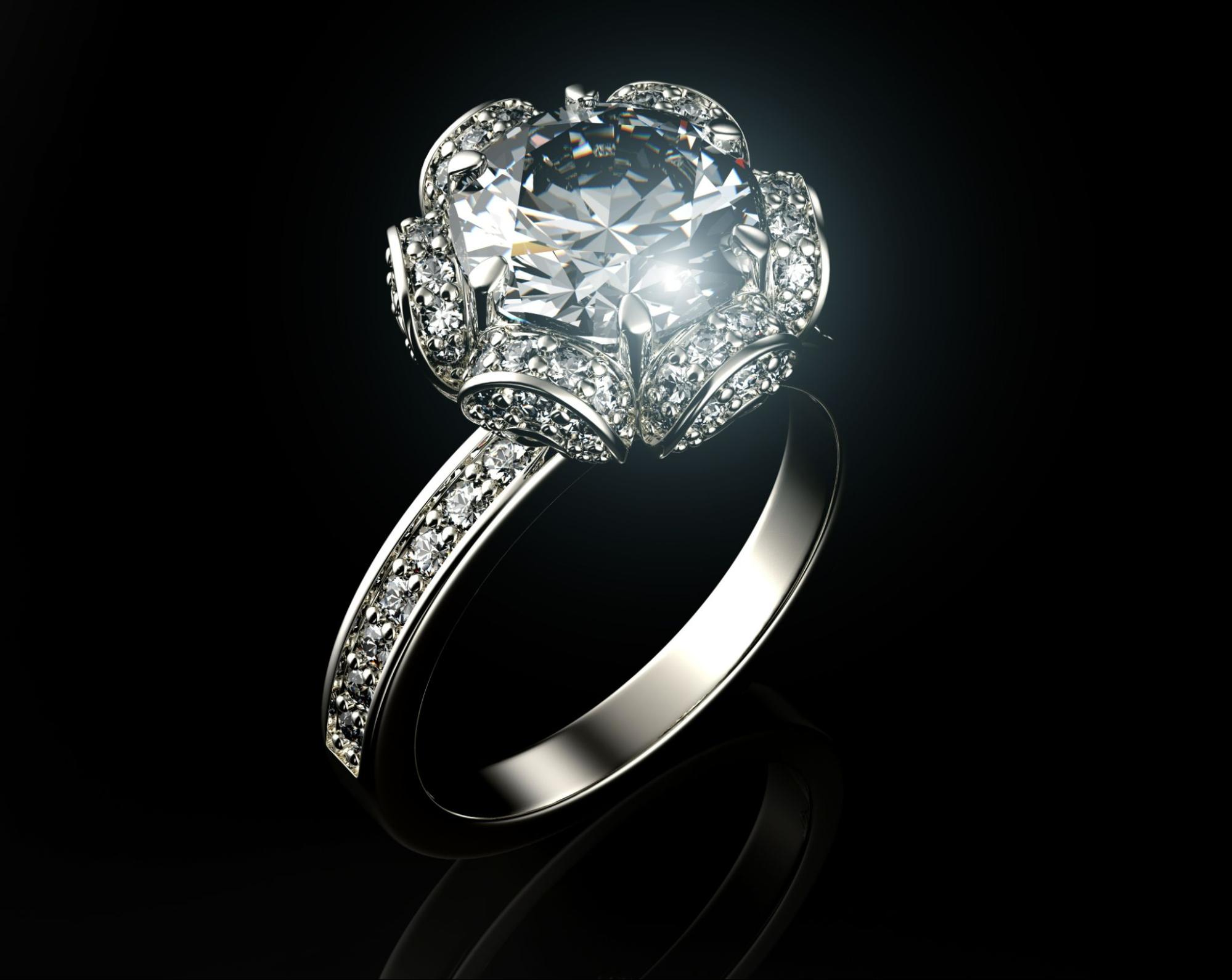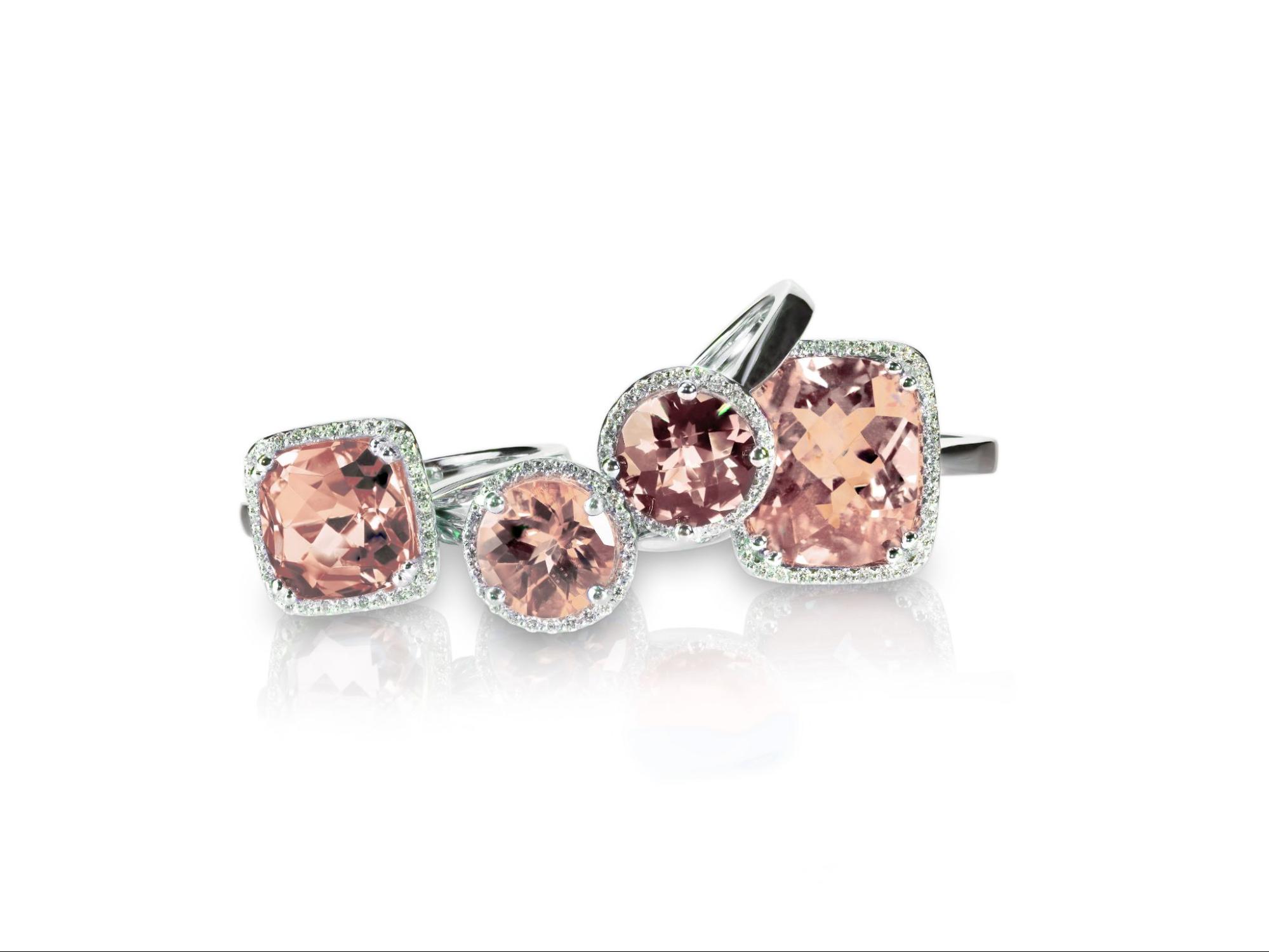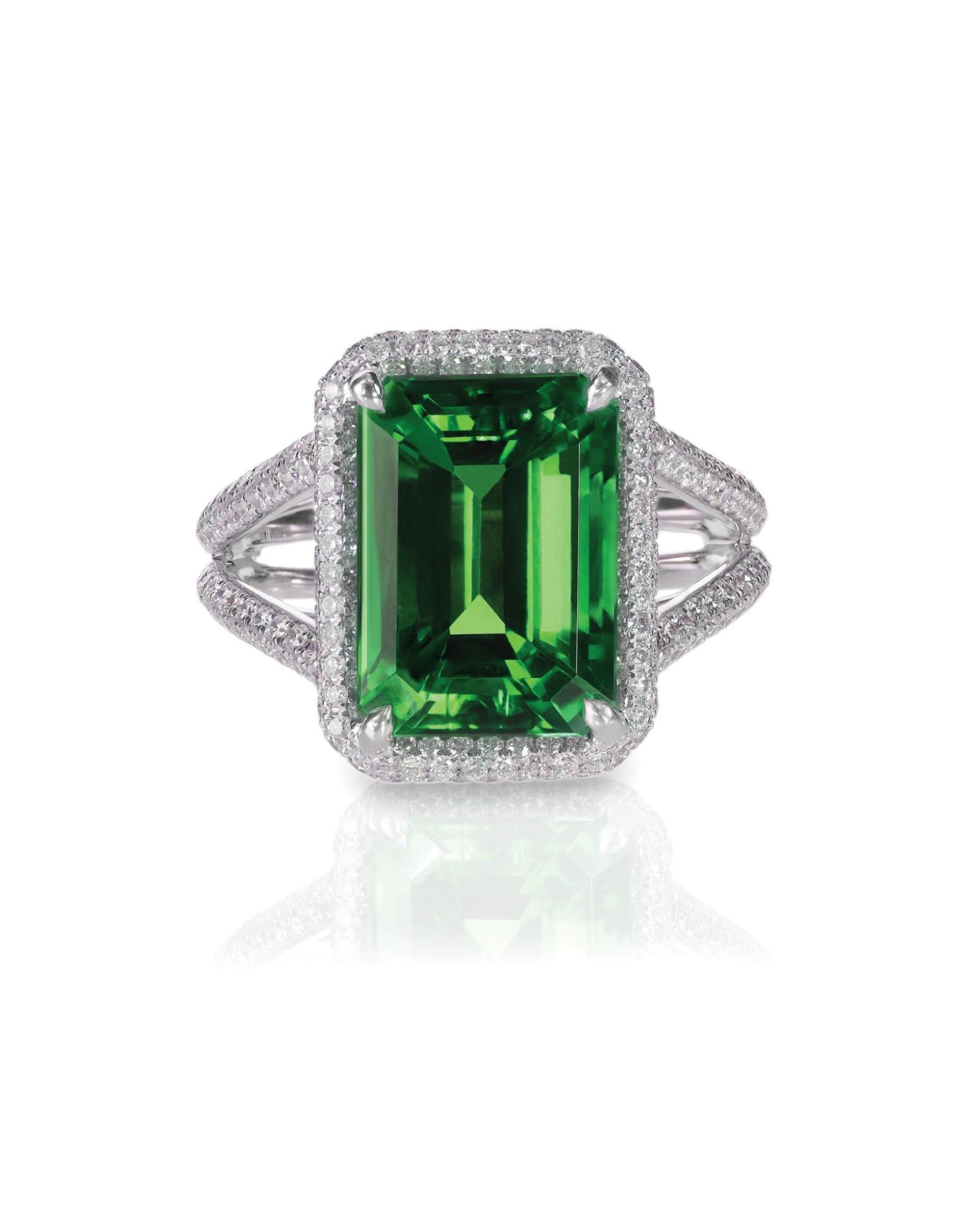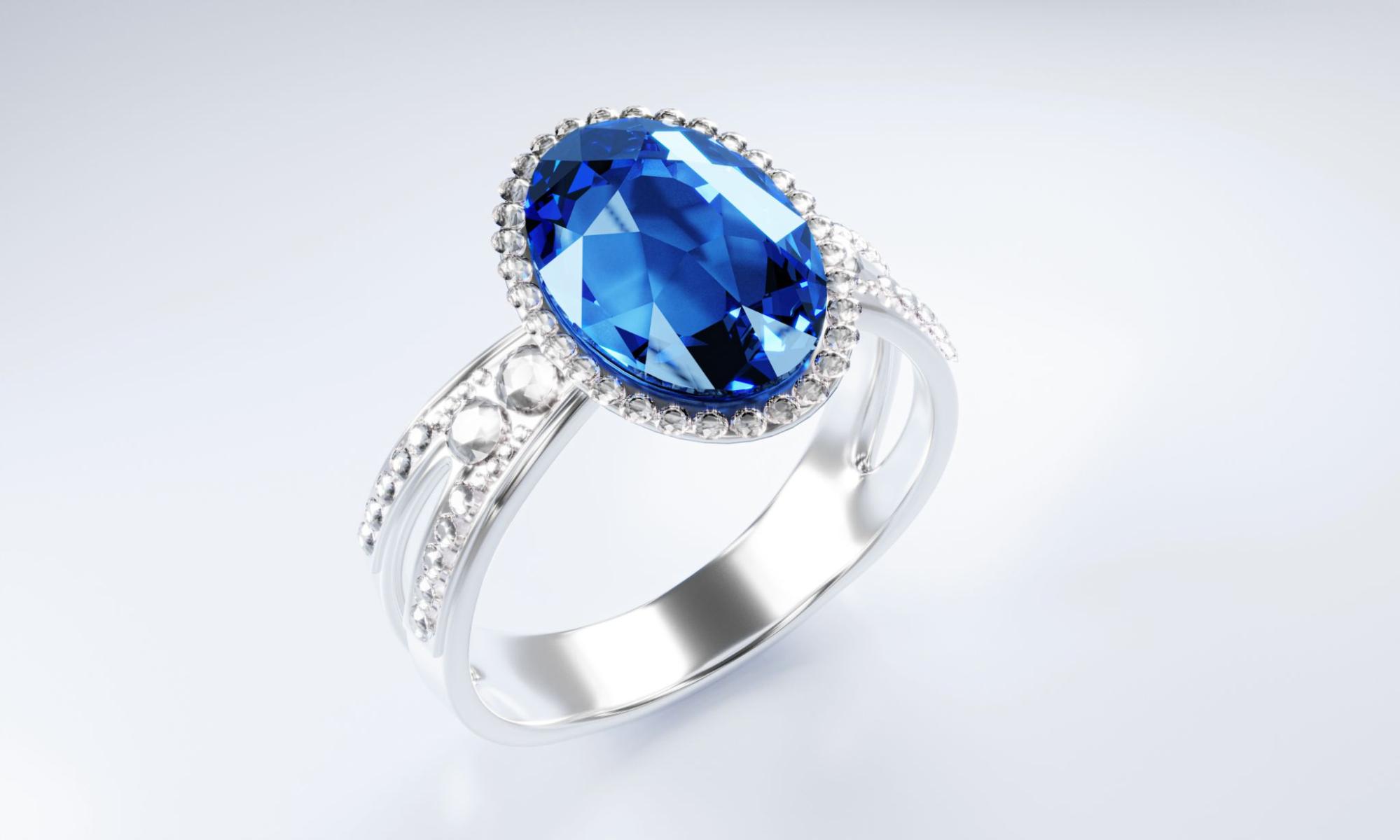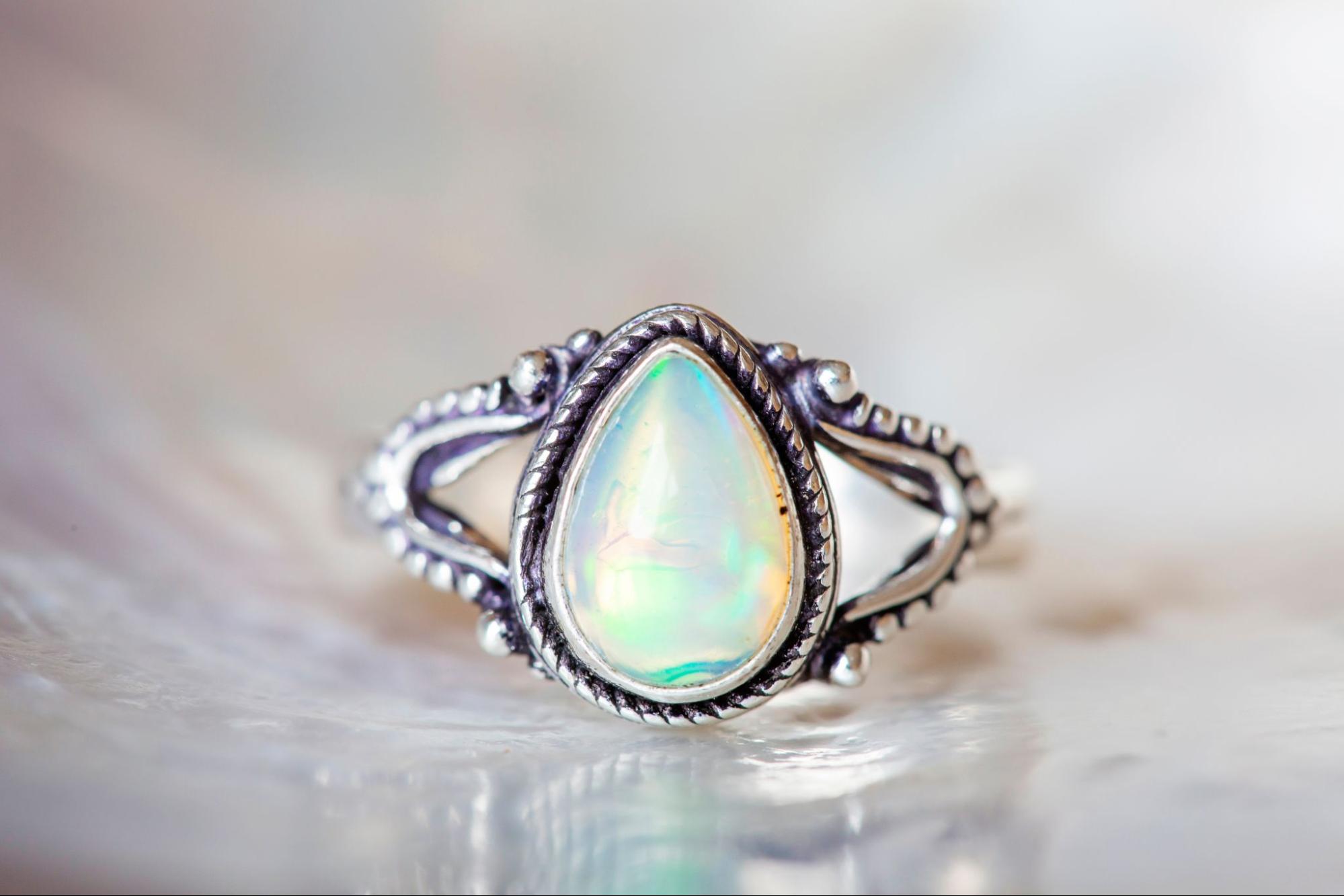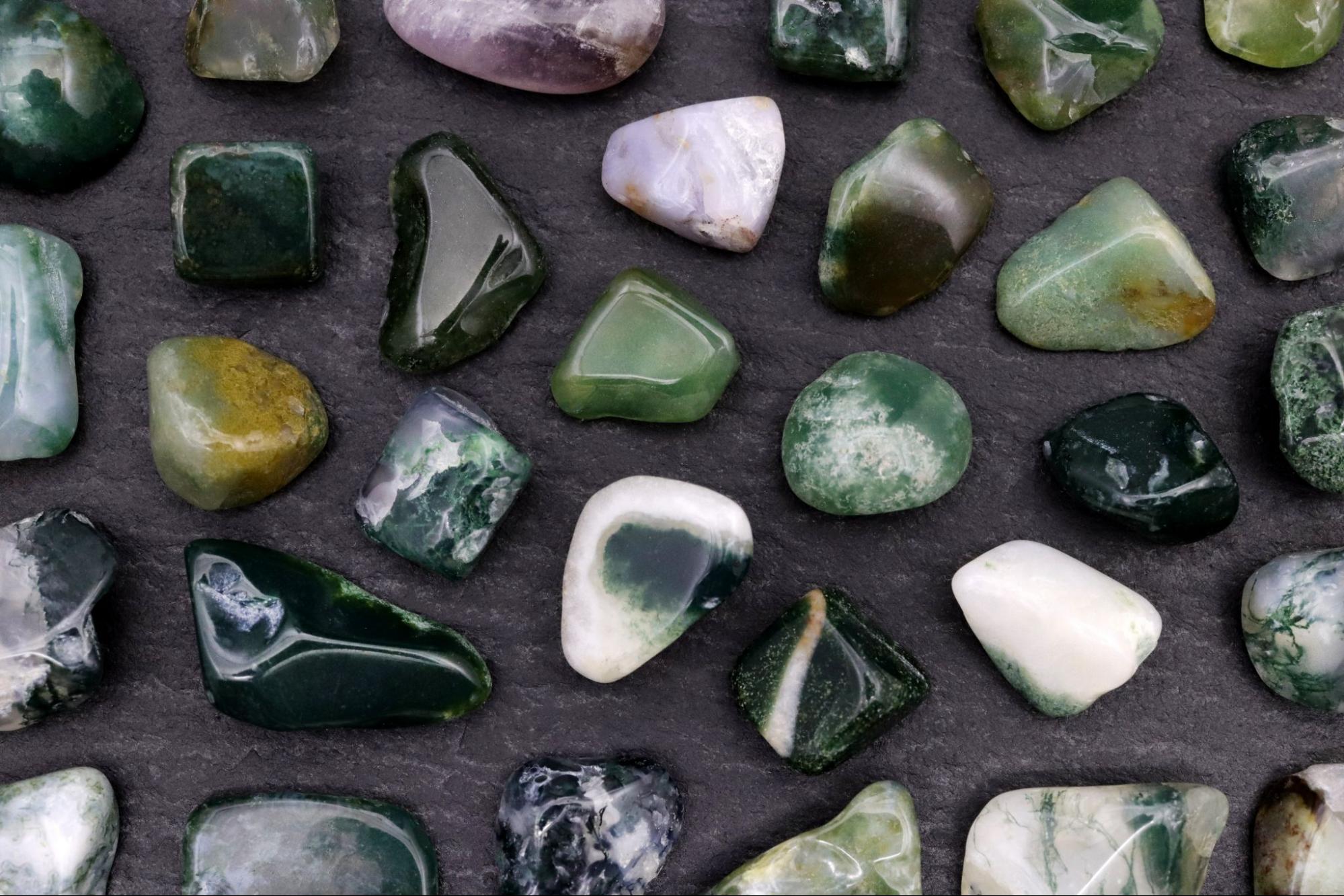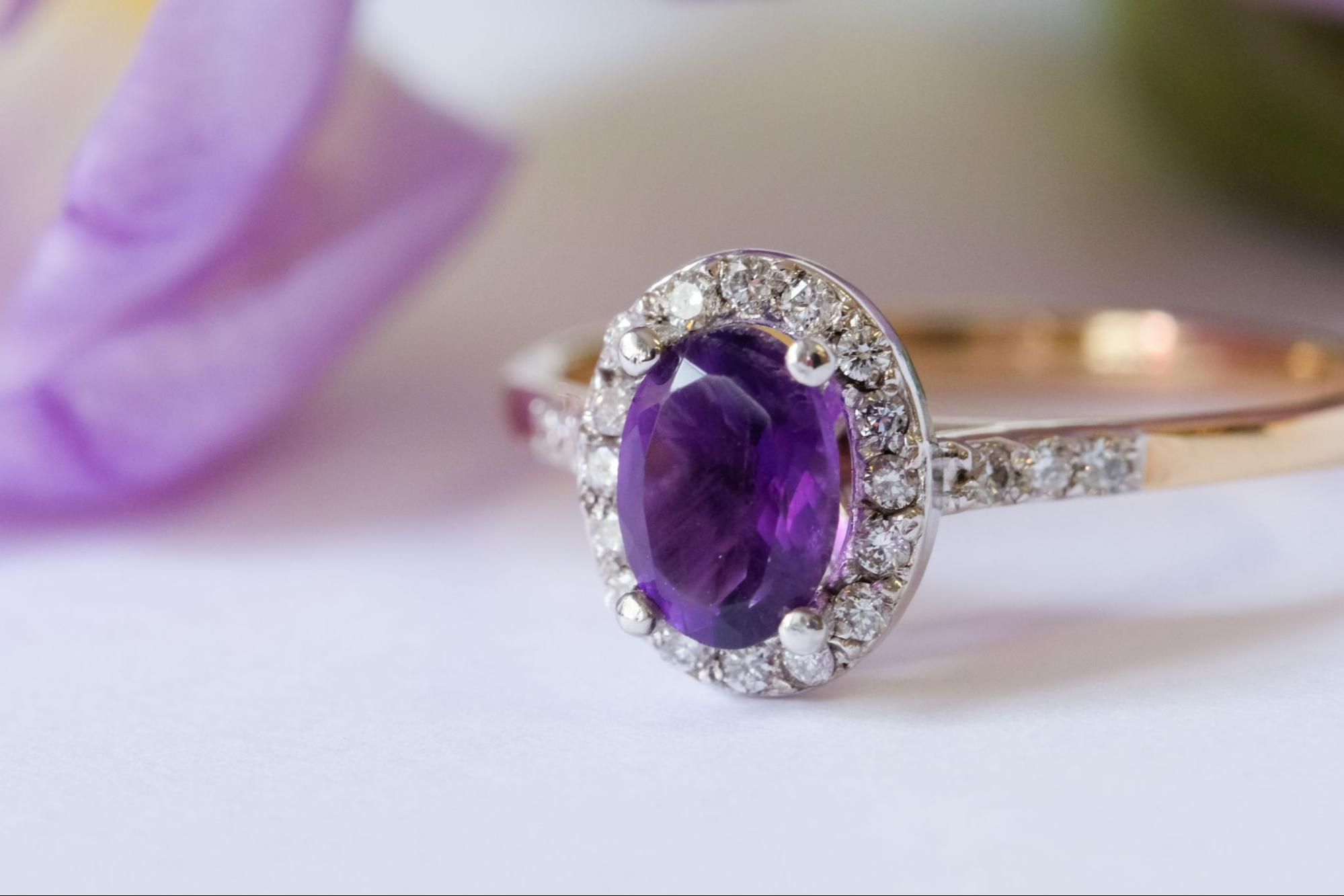From Emerald Engagement Rings to Sapphire Engagement Rings and more, Ware Jewelers Has Gorgeous Precious Gemstones Sure to Make Your Unique Engagement Ring Sparkle!
Lately, it seems alternative engagement rings are all the rage. While the majority of couples still settle on a diamond engagement ring, modern brides-to-be are increasingly turning to colorful gemstones to accent their ring fingers. And though there’s nothing wrong with stepping outside of tradition to express yourself, it’s vital to do your research before selecting a gemstone for your alternative engagement ring.
After all, this is a piece of jewelry you’re going to wear for the rest of your life–you want to ensure that it’s durable, meaningful, and lasting.
That being said, let’s take a look through the pros and cons of some of the most popular choices for alternative engagement rings.
Moissanite Engagement Rings
Moissanite has galactic origins. It is named after French scientist Henri Moissan, who discovered particles of the semi-precious stone in a meteorite crater left in the Arizona desert. Unfortunately, the stone is incredibly rare in nature, so today’s moissanite is lab-created.
It is engineered to simulate the look of a diamond, but it is compositionally different and thus cannot ever be truly visually identical to a diamond.
Pros of a Moissanite Engagement Ring
As synthetic gemstones, moissanite has the advantage of being lower priced than diamonds or other natural gemstones. You can get a bigger stone for less money and pocket the savings. This isn’t to say that all moissanite are priced the same–even lab-created stones will vary in color, clarity, and size, and the highest quality and/or largest moissanite will naturally cost more.
Moissanites are also very durable. When seeking an engagement ring, you obviously want a stone strong enough to stand up to daily wear. Diamonds are famously a 10 on the Mohs hardness scale, but moissanite–ranking at a 9.5–is close behind.
Cons of a Moissanite Engagement Ring
Upon closer inspection, it will become obvious that your moissanite is not a diamond. Moissanite does not have the same faceting (the pattern of flat surfaces within a gem that help it reflect light) as a diamond and therefore exhibits a noticeably different type of brilliance.
Moissanite also can’t quite imitate the clarity of a diamond, and many have a slight yellow hue or cloudiness to them. So, if your goal with moissanite is to pass it off as a diamond, you may want to reconsider.
Furthermore, moissanite is a synthetic stone. While some people don’t mind a lab-created gemstone, others prefer something natural. If you want a rock that came from the earth, moissanite may not be for you. Plus, if you ever damage your moissanite, it can be a hassle to find a jeweler who is able to work with synthetic stones.
Expert jewelers are trained to deal with mined gemstones and may not feel comfortable handling your moissanite. This also means that moissanite won’t have the resale value of a diamond or other precious stone
Morganite Engagement Rings
Morganite was discovered in the early 20th century by the head gemologist of Tiffany & Co, George Kunz. It is associated with sweetness and innocence. Though it remained in obscurity for a while, this stone shot into the spotlight as rose gold began to trend. Some enjoy how morganite’s pink hue complements the popular coppery color of a rose gold setting.
Pros of a Morganite Engagement Ring
The main draw of a morganite ring, like that of a moissanite ring, is its cost. You can get morganite for a fraction of the cost of a diamond. If you’re planning a big blowout of a wedding or an exotic honeymoon, the morganite may be an option to suit your budget.
Morganite also appeals to some thanks to its attractive pink shade. It comes in a range of pinks and peachy colors, with high-quality morganite boasting deep, rosy tones. It could serve as an alternative to a more expensive pink diamond. It also sparkles nicely, so you don’t have to worry about your morganite looking dull or going unnoticed.
Though it doesn’t possess the durability of a diamond or a moissanite, morganite still falls between a 7.5 and an 8 on the Mohs hardness scale, beating out other popular stones like the opal in terms of durability.
Cons of a Morganite Engagement Ring
Like moissanite, morganite will not retain its value in the way that a diamond or precious gemstone would. If you are looking for an heirloom piece, morganite is probably not the best fit for you.
Morganite wearers also report that their stones need frequent cleanings. While every gemstone should be cleaned from time to time, some morganite wearers say they need to clean their rings multiple times a week to keep them sparkling.
Morganites can also be dulled and clouded by household chemicals or exposure to high heat (including steam cleaners). In short, they are high-maintenance stones, so don’t commit to one unless you’re really ready to commit.
Emerald Engagement Rings
As a “big four” gemstone alongside diamonds, rubies, and sapphires, the emerald has a long and storied history. Rarer than diamonds, these lush green gemstones have been used in engagement rings for many years.
Pros of Emerald Engagement Rings
Between 7.5-8 on the Mohs hardness scale, emeralds are hard enough to withstand daily wear. Rich green hues make the emerald a striking choice for a solitaire ring, or as the center stone in a multi-stone ring.
The May birthstone, emeralds are also associated with royalty and adorn many ancient temples and palaces throughout the world. The emerald offers all the flair of a nontraditional stone but with the pedigree of a precious gem.
Cons of Emerald Engagement Rings
Emeralds are prone to symmetrical inconsistencies which may make certain shapes difficult or impossible for gem cutters to achieve. So, if you want a fancy or complex gemstone shape, you are better off with a different stone. In addition, emeralds tend to have inclusions that make them more prone to cracking.
Many emeralds are oiled to bring out their most vibrant color, so over-cleaning them or cleaning them poorly can strip the oils and leave you with a lackluster emerald. You can find unoiled emeralds, but they are more expensive. In fact, thanks to their rarity, high-quality emeralds are typically more expensive than diamonds.
In short, emeralds can be great stones for engagement rings, but we recommend consulting with an experienced gemologist to ensure that you’re buying a quality emerald.
Sapphire Engagement Rings/Ruby Engagement Rings
We lumped these together because they come from the same mineral: corundum. Color variations occur naturally thanks to trace minerals in the gemstones. Sapphires are blue thanks to iron and titanium, while rubies get their red appearance from chromium. Since they’re so compositionally similar, they share most of their pros and cons.
Pros of Sapphire Engagement Rings/Ruby Engagement Rings
Both sapphires and rubies rank at a 9 on the Mohs hardness scale, meaning they’re plenty hard enough to withstand daily wear. It’s very unlikely that anything you do in your day-to-day life will damage them; however, diamonds could scratch them, so avoid storing them with your sapphire or ruby.
As long as they’re not bouncing around in a jewelry box together, diamonds beautifully complement sapphires and rubies. Sapphires and rubies make excellent center stones for a halo setting or pave band. These gemstones also work well with both white gold and yellow gold.
Pricewise, rubies, and sapphires have the advantage of typically being less expensive than a diamond. However, there is a range in price, and the highest quality rubies and sapphires might actually end up costing you more.
Cons of Sapphire Engagement Rings/Ruby Engagement Rings
If you’re looking for radiance above all else, you’ll probably want to stick with a diamond. These colored gems don’t have the same high refractive index as a diamond does and therefore won’t exhibit as much sparkle under the light. Some brides may opt for a white sapphire to approach the look of a diamond, and though it has similar clarity, it will still lack the brilliance of a diamond.
Opal Engagement Rings
Opals are gorgeous stones. Representing hope and purity, the opal and its glimmering rainbow hues have unsurprisingly captivated many brides-to-be. It is a very commonly requested gemstone for an alternative engagement ring.
The unfortunate truth is that opals are too fragile a gemstone for daily wear. Opals come in at about a 5.5 on the Mohs scale–significantly softer than any of the other precious gemstones on this list. This means that any time you hit, bump, or scratch your hand, your opal is likely taking damage, too.
It is also exceptionally heat sensitive. Heat exposure can cause cracks to form within your opal, disfiguring its once-beautiful appearance. So if you use hot water to clean or shower, are exposed to heat at your job, or live in a hotter part of the world, an opal isn’t well suited for your daily jewelry.
While it’s not a great choice for an engagement ring, you can scratch your opal itch with a necklace–which is far less likely to be damaged than a ring is. You can even make it a part of your wedding ensemble!
At the end of the day, you’ll be wearing your engagement ring for the rest of your life. You don’t want to sacrifice longevity for aesthetics.
Moss Agate Engagement Rings
Agate is a semi-precious stone that consists of layers of chalcedony and quartz. They feature distinctive patterns and vibrant colors. Moss agates are named for the green, filament-like patterns within the quartz.
Pros of a Moss Agate Engagement Ring
These beautiful semi-precious stones are associated with tranquility and balance.
Their lush color is complemented particularly well by yellow gold and can be accented with diamond features for a bride who still wants a touch of tradition. While gorgeous, the moss agate still retains a rustic look perfect for a nature-loving girl looking to proudly express her outdoorsy side.
Cons of a Moss Agate Engagement Ring
Moss agate ranges from 6.5-7, so while it’s notably softer than a diamond or precious gemstone, it can be suitable for everyday wear. However, you will have to be careful and cognizant to keep your agate safe. Consider a more secure setting for the stone, such as a bezel setting or a setting with more prongs around the stone. These will help hold your moss agate in place and protect it from damage.
Also, you may want to remove your ring if you are cleaning with harsh chemicals, playing a sport, working outdoors, or performing other activities that put your hands in harm's way.
Amethyst Engagement Rings
Amethyst is a purple variety of quartz. Once believed to be extremely rare, recent discoveries of amethyst deposits have led to an abundance of this charming gemstone, and they’re becoming an engagement ring favorite.
Pros of an Amethyst Engagement Ring
The amethyst, with its striking purple hue, is an excellent choice for a bride who wants to move away from the traditional diamond while retaining a feminine look. Due to its abundance, even large and/or very high-quality amethyst will carry a lower price tag than most other gems. It is available in many shades of purple, from light lavender to deep violet, so you can pick the color that truly speaks to you.
As a member of the quartz family, amethyst is durable and can withstand daily wear as long as you are careful and attentive.
Cons of an Amethyst Engagement Ring
Amethyst can fade if exposed to intense light or heat. When storing your amethyst engagement ring, keep it out of direct sunlight and at room temperature. Like other less-durable gems, to avoid scratching or damaging it, you may want to remove your ring when engaging in intense work with your hands.
Finally, as a very abundant gem, an amethyst will not retain value as a diamond, emerald, ruby, or sapphire would.
Come to Ware Jewelers for Alternative Engagement Rings
Now that you know just about everything you need to find the perfect gemstone engagement ring, you need a place to shop. For generations, Ware Jewelers has served our community with one goal, to offer quality jewelry and exceptional customer service.
We have a team of certified gemologists and experienced bench jewelers assembled to find you the gemstone ring of your dreams. If you want a unique engagement ring, Ware Jewelers is the place to look.
And don’t forget to book an appointment with one of our jewelry experts on staff so that we can provide you with the personal time and attention that you deserve! We’ll see you soon at Ware Jewelers!

